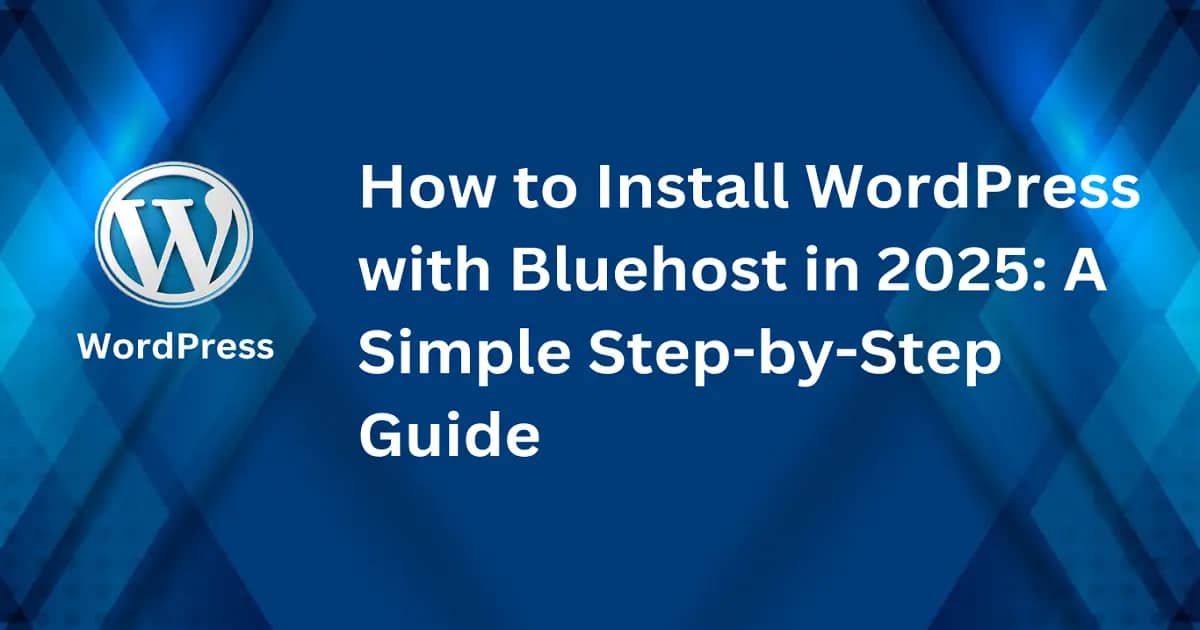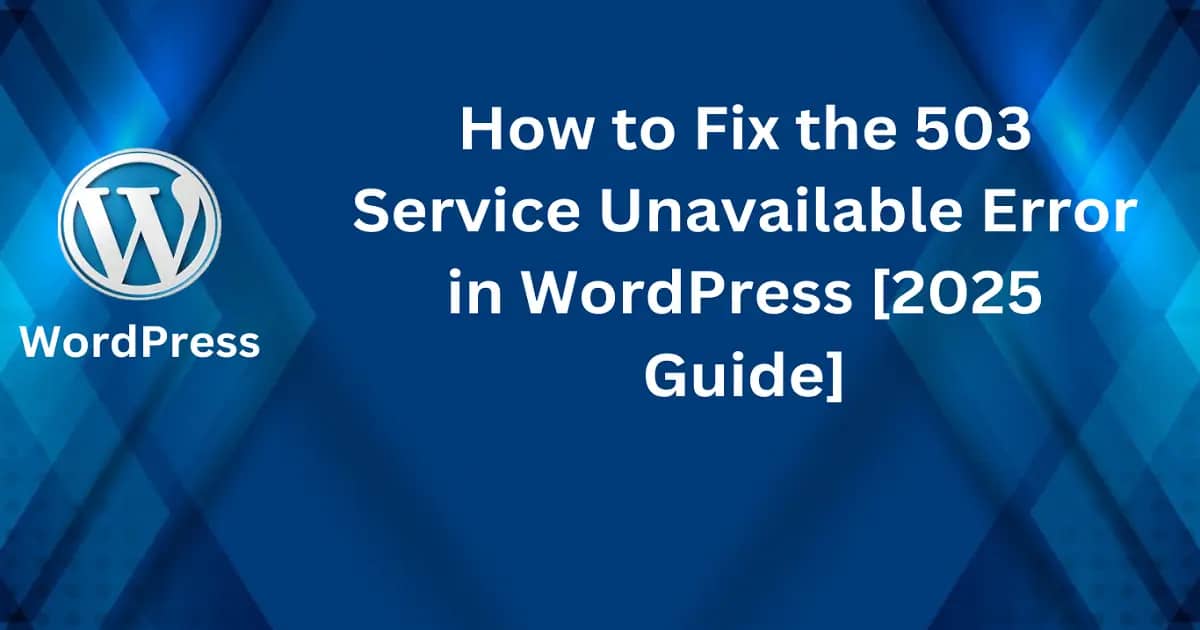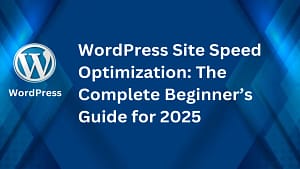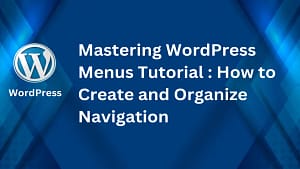Choosing the right WordPress theme can make or break your blog’s success. In 2025, free WordPress themes have truly stepped up, offering sleek designs, modern features, and impressive performance that often rival premium options.
With so many themes available, finding the best free WordPress themes for blog can feel overwhelming. But don’t worry—this guide narrows down the top 10 themes that strike the perfect balance of functionality, style, and ease of use.
These themes will help you focus on what matters most: creating great content, while your blog design works seamlessly in the background.
What to Look for in a Free WordPress Blog Theme
Finding the perfect theme for your WordPress blog is a key step in building an engaging and high-performing site. While free themes are an attractive option, not all are created equal. Here are essential factors to evaluate when selecting a free WordPress theme for your blog in 2025.
Performance and Speed
A theme’s performance directly influences your site’s speed, which impacts both user experience and search engine rankings. Metrics like Largest Contentful Paint (LCP) and Total Blocking Time (TBT) are crucial to monitor. Slow themes can frustrate readers, leading to higher bounce rates. Look for options that:
- Load in under 2–3 seconds.
- Are optimized for core web vitals.
- Use minimal, streamlined coding to ensure fast rendering.
Themes like Astra, GeneratePress, and Neve frequently rank well in terms of speed while maintaining rich functionality.
Responsiveness and Mobile Optimization
With mobile traffic dominating in 2025, your theme must look and function flawlessly on all devices. A responsive theme automatically adjusts layouts to fit screens of various sizes, ensuring your blog is readable and visually appealing on smartphones, tablets, and desktops.
- Verify if the theme passes Google’s Mobile-Friendly Test.
- Check how images and navigation menus adapt on smaller screens.
- Test the demo version on your phone before committing.
Failing to prioritize mobile optimization could alienate a significant chunk of your audience.
Customization Options
Free themes should provide enough flexibility to create a blog that reflects your unique vision. Look for themes that offer:
- Multiple layout options (e.g., grid, list, single column).
- Adjustable fonts, colors, and backgrounds.
- Built-in templates for headers or footers.
Some themes even include drag-and-drop builders, which make it easier to tweak designs without touching code. With tools like these, you can stay on-brand and still use a free theme.
Plugin Compatibility
A good theme plays well with essential plugins that expand your site’s functionality. Ensure that your chosen theme supports popular plugins like:
- Elementor for custom page designs.
- WooCommerce if you plan to sell products.
- WPForms for creating contact forms and surveys.
You don’t want a theme that limits your ability to integrate tools critical to your blog’s growth.
SEO Considerations
Your theme heavily influences your blog’s SEO potential. Factors like clean coding, fast loading times, and proper header structure lay the foundation for better rankings. An SEO-friendly theme will optimize how search engines crawl and index your site.
Top themes often include:
- Schema markup for enhanced search visibility.
- Optimized image loading to improve speed.
- Accessible designs to ensure usability for all visitors.
Pair an SEO-focused theme with quality content, and you’ll see a boost in organic traffic.
When choosing a free WordPress theme, remember that it’s more than just how it looks. Performance, usability, and features should align with your blogging goals to create a seamless experience for both you and your readers.
Read Also: Best SEO WordPress Plugins for Better Rankings in 2025
Read Also: 7 Best WordPress SEO Tools to Boost Your Site’s Rankings
Top 10 Free WordPress Blog Themes for 2025
The right theme is essential for turning your blog into a visually appealing, fast, and user-friendly space. Thankfully, free WordPress themes in 2025 push boundaries, offering top-tier features that were once exclusive to paid options. Below, we feature the standout ten themes, each perfect for blog owners looking for flexibility, performance, and style without any cost.
1. Astra
Astra is a powerhouse when it comes to speed and flexibility. Known for its lightweight design, Astra ensures your blog loads fast, improving both user experience and SEO rankings. It’s highly compatible with popular page builders like Elementor, making customization easy even for beginners. With numerous pre-built templates and adjustable settings for fonts, colors, and headers, Astra caters to personal blogs, portfolios, and even small business sites. Plus, it doesn’t skimp on mobile responsiveness, ensuring your readers enjoy seamless navigation on any device.
2. Neve
If you’re after simplicity paired with functionality, Neve is an excellent choice. Designed with a mobile-first approach, this theme adapts perfectly to different screen sizes, keeping your site looking sharp anywhere. Neve’s AMP (Accelerated Mobile Pages) compatibility enhances loading speed further, a crucial factor in 2025 given users’ short attention spans. Beginner-friendly features like drag-and-drop builders and pre-designed starter sites eliminate the hassle of starting a blog from scratch.
3. OceanWP
Looking for advanced customization? OceanWP has you covered. This feature-packed theme supports dynamic styling changes, enabling you to adjust layouts, headers, and fonts without touching a single line of code. If you’re considering adding an eCommerce component, OceanWP’s seamless WooCommerce integration makes selling products or services a breeze. Whether you want to add parallax effects or design unique pages, this theme offers deep customization options for any skill level.
4. GeneratePress
Prized for its minimalistic and performance-focused approach, GeneratePress is built for speed. Its lightweight framework keeps loading times ultra-fast, which is vital for retaining readers and boosting search rankings. GeneratePress is also modular, meaning you can enable or disable features based on your blog’s needs to avoid unnecessary bloat. Perfect for bloggers who prioritize clean design and speedy performance.
5. Hestia
For bloggers who want a modern, visually striking design, Hestia is an ideal pick. Its one-page layout and smooth scrolling make it great for telling stories or featuring content in a sleek, user-friendly format. The customizer tool lets you make adjustments in real-time, so you can perfect your site’s look without juggling multiple menus. It’s a beginner-friendly choice for anyone creating a personal blog or portfolio.
6. Kadence
If easy setup and professional design are non-negotiables, Kadence delivers. This theme comes with numerous pre-built templates tailored for various niches, from lifestyle blogs to creative portfolios. It also includes intuitive controls for colors, typography, and layout settings. Kadence pairs beautifully with Gutenberg and offers drag-and-drop blocks, making it simpler than ever to customize your pages.
7. Blocksy
Blocksy is a theme designed for speed and flexibility, making it a favorite among bloggers. Optimized for the Gutenberg editor, it allows you to create fast-loading pages with minimal effort, thanks to its lightweight structure. Blocksy also includes a range of header and footer customization options, ensuring your blog has a unique look. Its compatibility with WooCommerce and third-party plugins adds to its versatility.
8. Sydney
Want a professional, polished blog? Sydney does the job with its sleek, business-oriented layouts. This theme integrates seamlessly with Elementor, enabling you to create custom pages without a steep learning curve. Its collection of demos and customization tools make it suitable for personal or professional blogs, offering enough flexibility to adapt to evolving needs.
9. Zakra
Zakra stands out as a multipurpose theme with a lightweight framework, ensuring fast loading speeds even with engaging visuals. It comes with multiple templates that match different blogging niches, from travel to tech. Zakra’s compatibility with popular plugins makes it a flexible choice for bloggers who want a functional, well-rounded site.
10. Hello Theme
If simplicity is top of your list, Hello Theme is as minimalistic as it gets. Built by Elementor, this theme is the blank canvas you need for building custom layouts and pages. Its stripped-down design ensures maximum speed, while its deep Elementor integration unlocks nearly endless design possibilities. Perfect for bloggers who want full creative freedom without extra frills.
Each of these themes offers unique strengths while providing top-notch performance and style. Whether you’re starting your first blog or refreshing an old site, these WordPress themes give you the tools to shine online.
How to Choose the Best Theme for Your Blog
Selecting the right theme for your blog isn’t just about appearance — it’s about functionality, ease of use, and scalability. Your theme impacts how users interact with your site and how well it fulfills its purpose. Let’s break down what to consider when choosing the best theme for your blog.
Identify Your Blog’s Purpose
Before diving into theme options, define what your blog is all about. Are you running a personal blog to share insights? Do you need a professional look to attract clients? Or is it an e-commerce blog that requires functionality for sales? Your blog’s purpose directly influences the kind of theme you should use.
- Personal blogs: Look for themes with clean, simple layouts that emphasize storytelling. Popular picks include themes designed for image-heavy posts or easy-to-read typography.
- Professional blogs: Choose sleek, minimalist themes with portfolio or resume options if you need to showcase services or past work.
- E-commerce or monetized blogs: Go for themes that integrate seamlessly with WooCommerce or offer ad space in non-intrusive ways.
Think of your theme as the foundation of your blog’s identity — it should align with your niche and audience expectations while helping you achieve your goals.
Read Also: 10 Amazing Jewelry Shop WordPress Themes for Modern Online Stores
Evaluate Your Technical Skills
Be honest about your ability to work with themes. While some are beginner-friendly, others can be challenging if they require coding.
- For beginners: Focus on themes with drag-and-drop page builders like Elementor or built-in customizer options. These tools let you tweak layouts, colors, and fonts without needing code.
- For advanced users: Look for themes that offer deeper customization, like the ability to access CSS or PHP files. Modular frameworks, such as Genesis, are perfect for experienced bloggers who want total control.
Don’t feel pressured to go for the fanciest-looking themes if they’re overwhelming to set up. Your time is better spent creating content than wrestling with complex settings.
Consider Long-Term Goals
Your blog today might look very different in a few years. A theme that’s perfect now could hold you back later if it lacks scalability. Choose a theme that grows with your blog.
- Check for plugin compatibility to ensure you can add features like e-commerce, forums, or advanced analytics down the line.
- Opt for themes with flexible layouts. For example, a blog that starts small may later need a homepage slider, multiple navigation menus, or dynamic footers.
- Look for themes with regular updates. This ensures security and compatibility as WordPress evolves.
Think of your theme as an investment in your blog’s future. Choosing a short-term option can lead to headaches later when migrating or redesigning your entire site.
By focusing on your blog’s purpose, balancing usability with customization needs, and planning for growth, you’ll land on a theme that not only looks great but works great, too.
Tips to Maximize Your Theme’s Performance
Choosing a fantastic theme is just the first step. To ensure your blog runs smoothly and attracts more readers, optimizing your theme for performance is essential. Small tweaks can make a massive difference in how quickly your site loads and how users experience it. Let’s break this down into actionable steps.
Use Caching Plugins
Caching plugins are like secret weapons for speeding up your site. They work by saving a static version of your pages, reducing the need for servers to regenerate them every time a visitor lands on your blog. This optimization cuts load times significantly.
- WP Rocket is a top-tier option that’s incredibly beginner-friendly. It automates complex tasks like file compression or browser caching with just a few clicks.
- Other popular caching plugins like W3 Total Cache or LiteSpeed Cache can also dramatically lower server load and improve user experience.
Think of caching plugins as personal assistants for your website—streamlining processes so your blog can perform at its best.
Optimize Images and Content
Images catch the eye, but they’re also notorious for slowing down websites. High-resolution photos and heavy files can be major culprits for slow performance. The solution? Compress and optimize them without compromising quality.
- Tools like ShortPixel or Imagify make it easy to compress image sizes while keeping them clear and crisp.
- Consider converting your images to WebP, a format that’s lighter and faster than traditional JPEGs and PNGs.
Don’t stop at visuals. Poorly formatted text, unnecessary HTML, or extra whitespace can also drag things down. Use plugins like Autoptimize to minify CSS and JavaScript files. By keeping both your words and visuals lean and polished, you’ll serve your audience a faster, smoother experience.
Regular Theme Updates
Your theme isn’t a “set it and forget it” deal—it needs regular maintenance. Developers often release updates to fix bugs, improve speed, or enhance security. Skipping updates not only opens you up to potential vulnerabilities but also leaves you behind in terms of performance.
- Schedule weekly or monthly reminders to check for updates.
- Always back up your site before making changes, just in case something goes wrong.
Think of updates like oil changes for your car—small actions with a huge payoff in the long run. Staying up to date ensures your theme remains compatible with the latest WordPress versions and plugins.
Conclusion
The perfect WordPress theme is more than just a design choice—it sets the tone for your blog’s success. From speed and mobile optimization to customization and SEO-readiness, the best free themes in 2025 prove that functionality doesn’t have to come with a price tag.
Experimenting with a few options from our list can help you find the ideal match for your vision and goals. Don’t be afraid to test demos, tweak settings, and ensure your theme aligns with your content’s purpose.
Your blog deserves a theme that works as hard as you do to provide readers with a seamless experience. Which theme will you try first? Let us know!
![Top 10 Best Free WordPress Themes for Blog [2025 Edition]](https://mlpojthiu1xd.i.optimole.com/cb:0u7M.d1c2/w:1200/h:630/q:mauto/ig:avif/https://webschemer.com/wp-content/uploads/2025/02/top-10-best-free-wordpress-themes-for-blog.webp)






